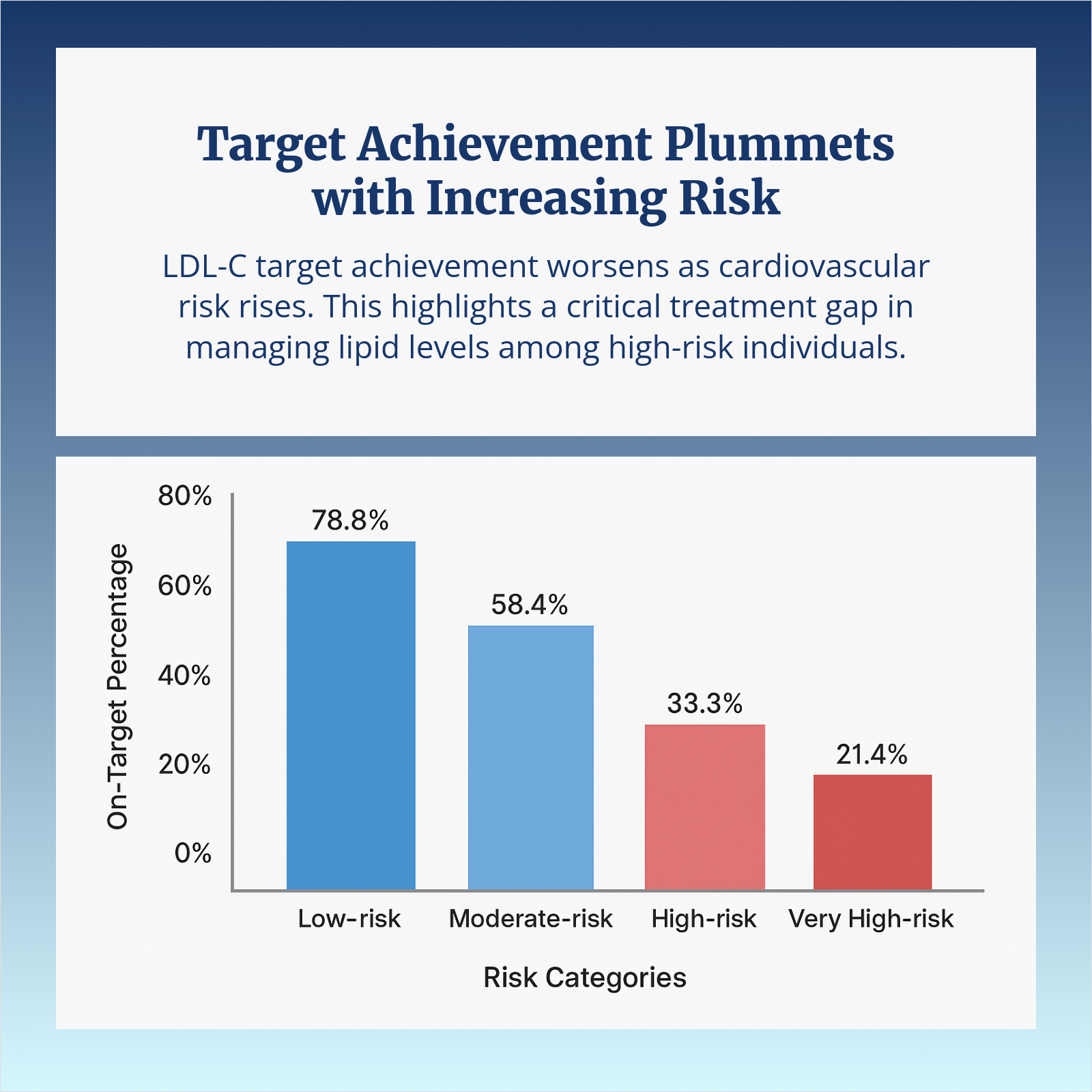
Cyclosporin A-loaded dissolving microneedles for dermatitis therapy: Development, characterisation and efficacy in a delayed-type hypersensitivity in vivo model - PubMed
Source : https://pubmed.ncbi.nlm.nih.gov/38472726/
Several drugs can be used for treating inflammatory skin pathologies like dermatitis and psoriasis. However, for the management of chronic and long-term cases, topical administration is preferred over oral delivery...
A novel cyclosporin A–loaded lipid vesicle microneedle system enhanced skin delivery, reduced inflammation, and improved histological outcomes in dermatitis models, offering a safe, targeted alternative to corticosteroid-based therapies for chronic inflammatory skin conditions.
Familial hypercholesterolemia (FH) is often called the “silent accelerant” of cardiovascular risk. From early in life, patients carry LDL-C levels that standard therapy rarely brings to target, resulting in decades of cumulative cholesterol exposure and a significantly elevated risk for premature ASCVD events.
Despite this, FH remains under-recognized—fewer than 1 in 10 patients are ever diagnosed. Missed opportunities for cascade screening and delayed follow-up testing mean many families stay at risk until a major event occurs. Even when FH is identified, achieving LDL-C targets aligned with clinical guidelines remains a challenge.
Clinical data continue to support timely intensification of therapy when conventional approaches fall short. Inhibition of the PCSK9 pathway has been associated with nearly 50% reductions in LDL-C, with added improvements in ApoB and lipoprotein(a). A 2025 meta-analysis showed these effects in both adults and children with FH, reinforcing the importance of early and aggressive intervention in high-risk cases.
Yet real-world care is rarely straightforward. Some patients show a weaker-than-expected response, often linked to missed doses, elevated lipoprotein(a), or genetic variability. Others face barriers tied to access, coverage, or fragmented care, but progress depends on detection, intensification, and follow-up.
How are you identifying FH patients earlier in your practice? When do you escalate therapy—and what has helped sustain LDL-C control long term?
-
 Sachin PanchalOctober 26, 2025Systematic screening strategies are critical since most FH cases go unnoticed until an ASCVD event: • LDL-C thresholds: Persistent LDL-C ≥190 mg/dL in adults (≥160 mg/dL in children) without secondary causes Show More
Sachin PanchalOctober 26, 2025Systematic screening strategies are critical since most FH cases go unnoticed until an ASCVD event: • LDL-C thresholds: Persistent LDL-C ≥190 mg/dL in adults (≥160 mg/dL in children) without secondary causes Show More
Endocrine dysfunction is an under-recognized but significant driver of morbidity and mortality in the critically ill. This review highlights how biomarkers enable earlier detection, diagnosis, and monitoring of life-threatening endocrine crises—such as adrenal insufficiency, thyroid storm, and hyperglycemic emergencies—that may initially present with non-specific symptoms.
Highlights:
• Biomarkers—classified as prognostic, predictive, pharmacodynamic, or exposure-related—help guide both diagnosis and treatment decisions.
• Established markers include TSH for thyroid disease, cortisol for adrenal insufficiency, IGF-1 for growth hormone deficiency, and HbA1c for glycemic status.
• Advantages include earlier, objective detection and individualized therapy; limitations involve sensitivity, clinical validation, and interpretive complexity.
• Emerging tools like extracellular vesicles, serum diiodotyrosine, and neutrophil gelatinase-associated lipocalin (NGAL) may offer precision diagnostics.
• Advances in multiplexed and ultra-sensitive detection platforms are improving accuracy and accelerating clinical adoption.
What sets this study apart:
It synthesizes current and emerging biomarker evidence, positioning these tools to shift critical care endocrinology from reactive to precision-guided, proactive management.
Limitations:
Many novel markers lack large-scale validation. Regulatory hurdles and workflow integration also limit clinical translation in intensive care.
How are you leveraging biomarkers to detect endocrine crises earlier in the ICU? Could multiplex technology help improve diagnostic accuracy and resource utilization in your unit?
Fun Fact! Statin-associated muscle symptoms (SAMS) occur in 10–29% of patients, typically presenting as myalgia or myositis in the thighs or calves. Severe cases like rhabdomyolysis are rare. Genetic variations, especially in the SLCO1B1 gene, have been linked to a higher risk of developing SAMS during statin treatment.
Could SLCO1B1 genetic testing support safer, more personalized statin prescribing?

Could SLCO1B1 genetic testing support safer, more personalized statin prescribing?






